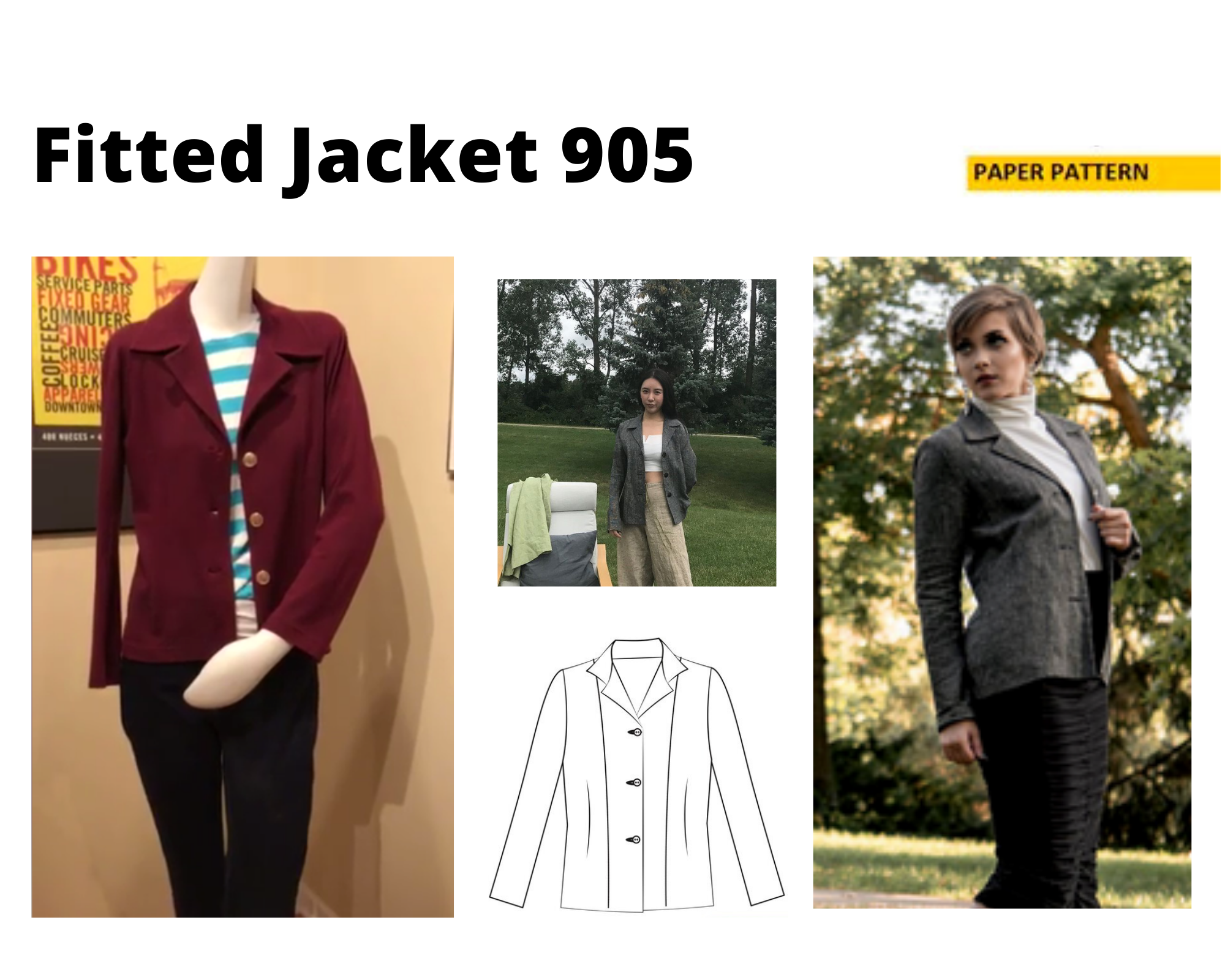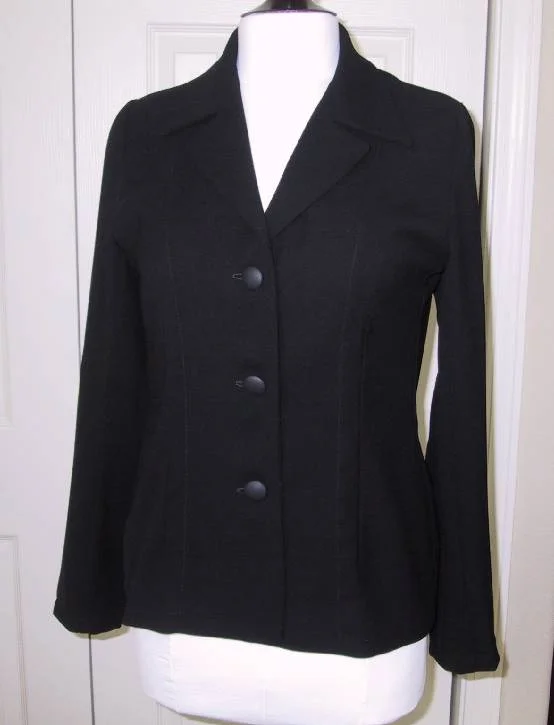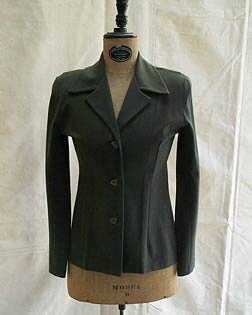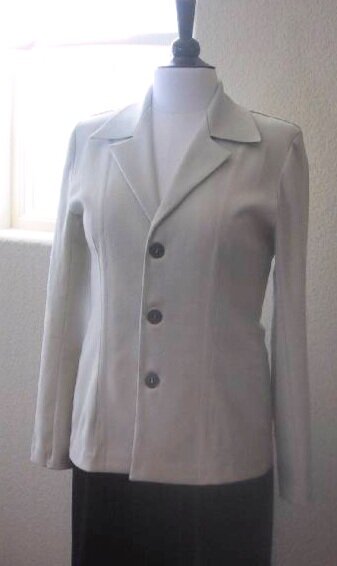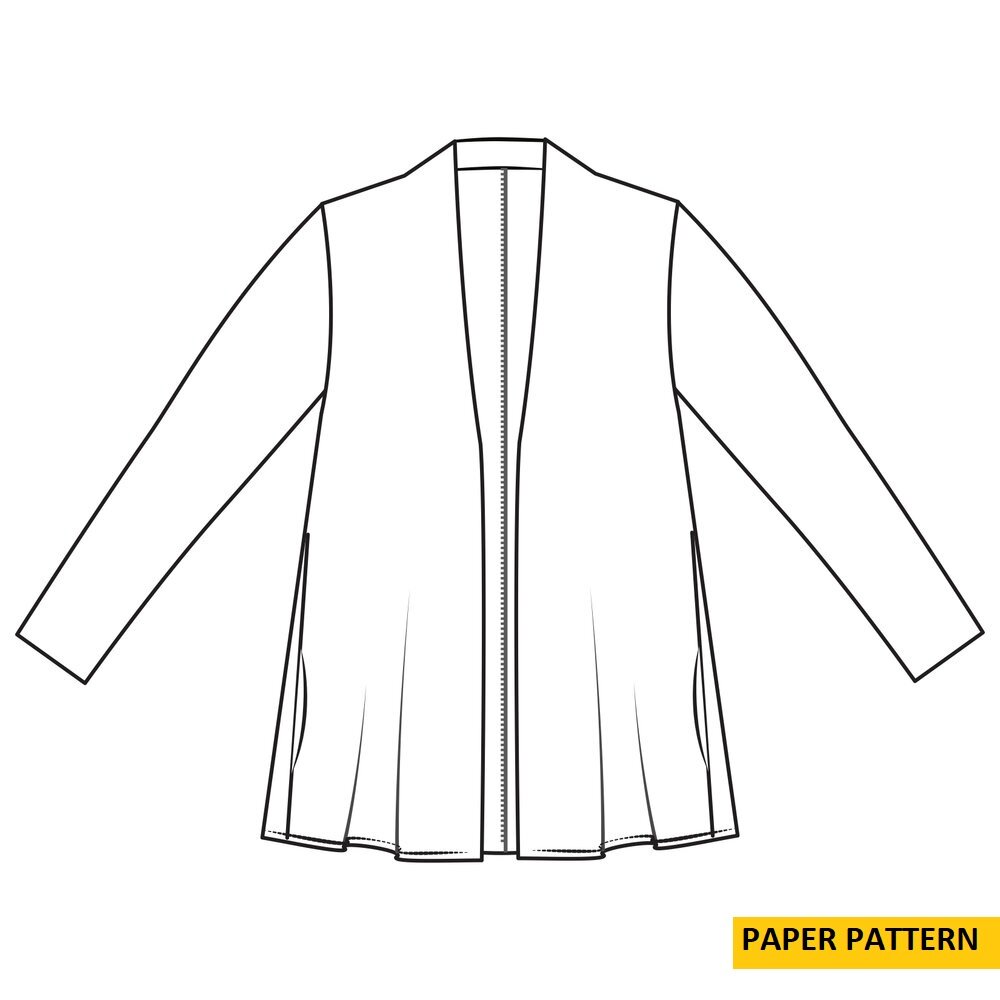Fitted Jacket 905 (Printed in Envelope)
Fitted Jacket 905 (Printed in Envelope)
Hip-length jacket with a notch collar, two-piece sleeve, darted front and shaped side back. Slightly extended shoulder line.
Fitted lines but not tight fitting best describes this jacket. Sophisticated and tailored looking with simple construction techniques. Great with Cuff Pant # 945, and Boatneck Shell # 311.
Multi-Sized: XS - XL
Printed in Envelope: This pattern is only available as a pre-printed tissue pattern.
Suggested fabrics: Ponte, Cotton/LYCRA knit, all kinds of wool, i.e. lightweight suiting, mid weight flannel, and heavyweight tweeds. Wool double-knit, lightweight wool gauze. Linen and linen blends, woven cotton and cotton blends, velvet of all kinds.
Suggested design options: Lengthen to fingertips. This pattern is suitable for stretch and non-stretch fabrics.
Share your makes with us with the hashtags #fittedjacket and #christinejonsonpatterns
Fitted Jacket, #905, Christine Jonson Patterns
Reviewed by Elizabeth Houlihan, Des Plaines, IL
I am amazed how quickly this casual close-fitting knit jacket went together. The notch collar tailored jacket is closer fitting than the cover drawing led me to expect. I will have to wear it by itself or over a silky shell. The shoulder pads are essential to a good fit and a professional appearance. When you request information from Christine Jonson Patterns, you get the royal treatment. Descriptions, size charts, and yardage requirements are included for each pattern. In the sizing chart, the bust measurement increases by 4" between small, medium, large, and extra large. It would help if the measurements were given as a range rather than as one number to guide the person in between sizes. She give no direction whether to go up or down a size if you are in between. I do not sew with knits very often, so these large leaps were disconcerting, especially since I was sewing a fitted jacket. Even though some sewers would rather charge in, restrain yourself and follow the well-written instructions. The techniques for this unique fabric differ substantially from those used on wovens. The shrinkage factor has been built into the draft of the pattern, so fabric should not be pre-shrunk. Most construction is done quickly on the serger. There is no lining or handwork and the only pressing is a final press near the end. For topstitching, she recommends that you use a walking or rolling foot to avoid distorting the fabric. I tried a regular foot without success. A Teflon foot worked well. I successfully learned how to cord buttonholes, which prevents them from stretching out of shape. I will use this new and valuable technique more often now that I have been forced to learn it.
-The Creative Machine, Summer 1999

